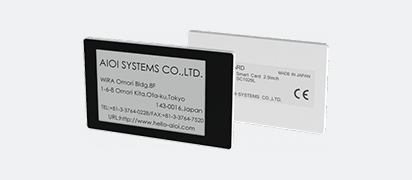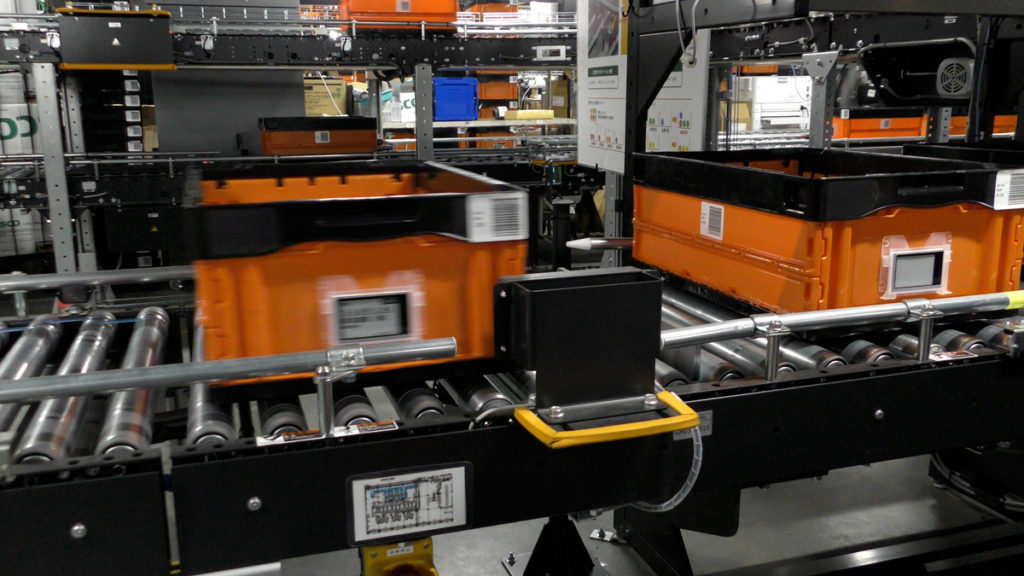
Trusco Nakayama Corporation has established an immediate delivery system with a nationwide logistics network to meet the needs of manufacturing sites to procure “necessary items” in “necessary quantities” at “necessary timing”. The state-of-the-art material handling equipment has been installed at “Planet Minami Kanto” (Isehara City, Kanagawa Prefecture), which started operation last August, and the “Smart Card” of AIOI Systems is an essential tool for fully utilizing its functions. How does this e-Paper based ID card, also known as “visible RFID,” support Trusco’s high-speed shipping? We interviewed Yumiko Morisaki, General Manager of Planet’s Minami Kanto Center, about the advantages and usage of this card, as well as the new form of future logistics that the company is aiming for.
Enhancing Shipping Functions with the Latest Material Handling Equipment
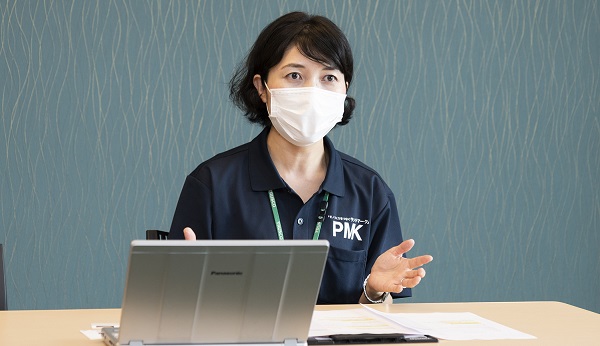
General Manager, Planet South Kanto Center
Yumiko Morisaki
Could you give us an overview of your company’s business?
Morisaki: We are a wholesale trading company that handles tools and materials used in factories and construction sites. Our corporate message is “Cheer Up! Japanese Manufacturers”. We have a logistics system in place to quickly respond to the needs of our customers. Sales for FY2020 are approximately 210 billion yen. We have 460,000 SKUs in stock, and more than 90% of orders are shipped from that inventory.
Do you have many suppliers?
Morisaki: We have 2,600 suppliers and over 5,500 customers. Products purchased from suppliers are stocked at our distribution centers and then wholesaled to home centers, online retailers, and other retailers nationwide in response to orders. We have 27 distribution centers in Japan from which we ship products daily, but we have faced many challenges in conducting smooth and efficient shipping operations.
What were some of the challenges?
Morisaki: We were behind in our efforts to go paperless. Until now, we had to manually affix stickers to the products picked in the warehouse for each destination and issue shipping instructions. Smaller items were managed in containers, but the instructions for these were also handwritten. The work involved in applying and removing stickers, generating waste, and human error that could lead to misdelivery were bottlenecks in the process.
Did you introduce “smart card” to solve these problems?
Morisaki: Yes, that’s right. Planet Minami Kanto, where we employed the smart card system, is our newest distribution center, which went into operation in August 2020. It is equipped with state-of-the-art material handling equipment, including high-speed cargo matching shuttle racks and automated warehouses. In order to fully utilize these functions, it was inevitable that we needed to go paperless on site. Smart Card is an essential system for achieving our goal of high-speed shipping.
Video of Case Study
Contributing to operational efficiency and a paperless work environment
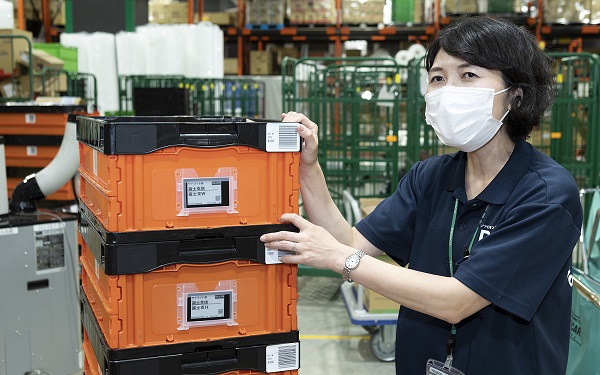
How did you come to employ smart cards?
Morisaki: We began considering the idea at the end of 2019, and conducted a test in June of the following year. We were able to introduce the system in about six months to coincide with the launch of Planet Minamikanto. Without the quick response and cooperation of AIOI Systems, we would not have been able to introduce the system in such a short period of time.
What are you using it for and how?
Morisaki: We installed smart cards on all folding containers used in the center and digitized shipping information that had previously been managed with stickers. We initially used 4,000 cards, but with the increase in the volume of goods handled, we have now purchased 100,000 new cards. The company has now purchased 100 new cards to handle the increased volume of merchandise.
Specifically, products picked up to order are matched to the cargo at the shuttle rack, and a reader-writer instantly prints the shipping destination information on the smart card. Containers coming out of the shuttle rack already have the information on them, allowing for smooth shipping operations.
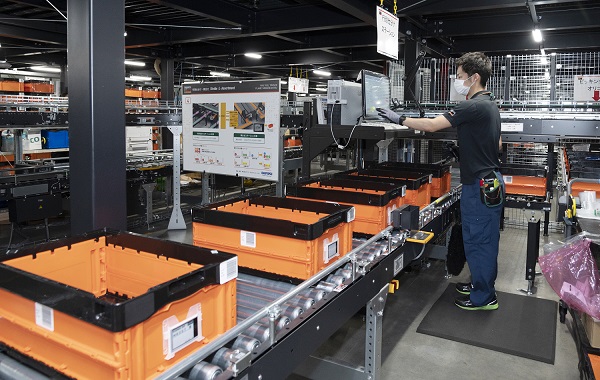
What are some of the advantages you have found in using the system?
Morisaki: In terms of work, we no longer have to put on and take off shipping stickers. Waste has also been reduced, and containers can be kept clean. Confusion in the field due to unapplied or duplicated stickers has been eliminated, and delivery errors caused by these problems have also been reduced. Although there was an initial cost involved in the introduction of the system, the smart cards can be printed and erased repeatedly, so there should be a cost benefit over the medium to long term.
In addition, since the displayed information can be rewritten, we recently added the order of route deliveries to improve driver convenience. When the system is used for inventory replenishment or shipment requests to neighboring branches, a QR code is written so that the recipient can scan it to find out the next step in the work process.
What were the deciding factors in introducing this system?
Morisaki: Smart cards were indispensable for the operation of the latest material handling equipment, which improves efficiency and reduces manpower. In addition, we thought it would be effective as a BCP measure to ensure business continuity even in unforeseen circumstances. Since information can be displayed without consuming any electricity except when being rewritten, I think it is advantageous in that shipping operations will not be disrupted even in the event of an emergency.
Supporting Japanese manufacturing with agility and reliability
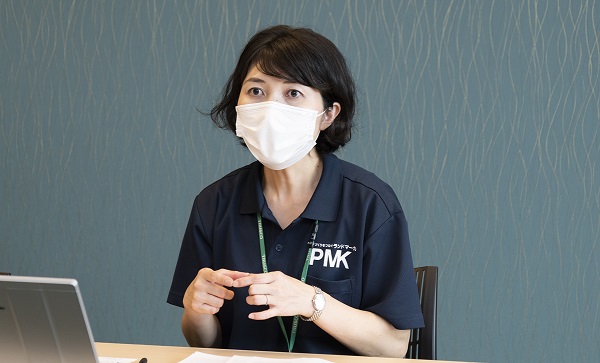
How about AIOI System’s support system?
Morisaki: Even in the event of a minor problem, we are able to promptly get a replacement product and get a report on the cause, which is very helpful. In fact, when we employed the smart cards, we were concerned about the shock damage caused by the automatic container assembling machine, but they took countermeasures against this problem after repeated in-house tests.
What are your plans for the future?
Morisaki: We have been actively investing in material handling equipment and cutting-edge technology to expand the number of items we handle and our inventory. In the future, we will further promote this and aim to build a new distribution platform “Trus Coplatform” that utilizes AI and robots. This is a new project with the key message “The best is already there.
In addition, in establishing a new logistics base “Planet Aichi” in 2024, we will promote joint research with Nagoya University. We have also formed a capital and business alliance with GROUND Corporation, a logistics solutions provider, and Cinnamon Corporation, an AI technology provider. We will continue to optimize the supply chain that supports Japanese manufacturing in order to realize the “fastest,” “shortest,” and “best” logistics in the industry.
Are smart cards an essential tool for realizing the futuristic logistics that your company is aiming for?
Morisaki: Yes, it is. We have introduced a variety of logistics equipment and facilities to improve efficiency and reduce manpower. PlaNet Minamikanto introduced shuttle racks and smart cards for the first time, and we are currently examining their effectiveness. Smart cards are a very effective tool for high-speed shipping, so we are naturally considering horizontal deployment to centers that have the latest material handling equipment.
Is there a way for small businesses to use smart cards effectively?
Morisaki: Since the information written on the card can be visualized, it has the advantage of making operations more reliable while promoting paperless operations. In logistics warehouses, work tends to be individualized, but since the order of processes and destinations are all displayed on the cards, even part-time employees on their first day with the company are unlikely to make a mistake. In addition to this, there are various other uses such as work history management, access control, and replacement of entrance passes, etc. We recommend that you first consider these uses in conjunction with your company’s issues.

